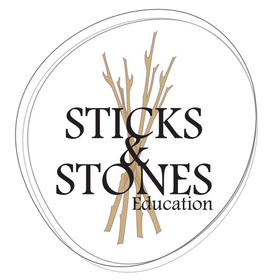
Developmental Milestones: The One Year Old
Developmental Milestones: The One Year Old
When children celebrate their first birthday, they are entering their second year of their life. They go from sitting independently to crawling to standing with support to walking, or toddling independently. So much physical change emerges during this milestone year, which in turn impacts their social, emotional and cognitive learning. They may become more independent and like to do things in their own way and their own time. They are driven to learn, and this drive only increases as they become older, heading towards their second birthday aka 'the terrible twos' (Hint: they're not terrible, they're just misunderstood and often misrepresented!).

It is important that children can play, learn, and explore within a safe environment. Much of this play is repetitive and may seem 'destructive' but children are merely learning through schematic play - where their brain is learning a thing and they want to do that thing over and over again. Let them play. They may need more appropriate items to play with - such as large soft pom poms to throw rather than the wooden blocks, but let them learn through play as their brain is driving them to do!

During this year, their concentration spans grow, therefore they can engage in more challenging experiences for longer period of times. As each day comes, they are open to new challenges and becoming more independent. From moving on their own, to feeding themselves - this is a big year for big learnings! Follow their lead. Children tell us what they need to learn, and when. It's up to us to support it.
The Developmental Milestones of 1-2 Year Olds
HOW CAN WE SUPPORT CHILDREN’S LEARNING AND DEVELOPMENT?
- Encourage your toddler to ask questions and face new challenges e.g. what’s the right way to go down the stairs – walk through each problem with them
- Help your toddler to experiment with everyday things e.g. show and explain why some things float in the bath and others sink
- Do simple experiments together like making play dough, blowing bubbles and looking at insects
- Talk with them about the technology and objects we use each day and how it helps us to live e.g. cups, pencils, TVs and computers
- Explore the outdoors together and talk about how things change during the day or over the year e.g. the weather or the seasons
- Pull things apart and put them back together again (e.g. a toy) and discuss what each part does
WHAT MILESTONE MIGHT WE OBSERVE?
THE GROWING CHILD:
- walks, climbs and runs
- takes two to three steps without support, legs wide and hands up for balance
- crawls up steps
- dances in place to music
- climbs on to a chair
- kicks and throws a ball
- feeds themselves
- begins to run (hurried walk)
- scribbles with pencil or crayon held in fist
- turns pages of book, two or three pages at a time
- rolls large ball, using both hands and arms
- finger feeds efficiently
- begins to walk alone in a ‘tottering way’, with frequent falls
- squats to pick up an object
- reverts to crawling if in a hurry
- can drink from a cup
- tries to use spoon/fork

THE SOCIAL & FEELING CHILD:
- begins to cooperate with others when playing
- may play alongside other toddlers, doing what they do but without seeming to interact (parallel play)
- curious and energetic, but depends on adult presence for reassurance
- may show anxiety when separated from significant people in their lives
- seeks comfort when upset or afraid
- takes cue from parent or primary carer regarding attitude to strangers
- may become upset easily if tired or frustrated
- assists others in distress by patting, making sympathetic noises or offering material objects

THE THINKING CHILD:
- repeats actions that lead to interesting/ predictable results, e.g. bangs spoon on saucepan
- points to objects when named
- knows some body parts and points to body parts in a game
- recognises self in photo or mirror
- mimics household activities, e.g. bathing baby, sweeping floor
- may signal when she/he has finished using the toilet
- spends a lot of time exploring and manipulating objects, putting them in mouth, shaking and banging them
- stacks and knocks over items
- selects games and puts them away
- calls self by name, uses ‘I’, ‘mine’, ‘I do it myself’
- will search for hidden toys

THE COMMUNICATING CHILD:
- comprehends and follows simple questions/commands
- says first name
- says many words (mostly naming objects)
- begins to use one to two word sentences e.g. ”want milk”
- reciprocal imitation of another toddler: will imitate each other’s actions
- enjoys rhymes and songs

WHEN SHOULD WE BE CONCERNED?
- when your child is not using emerging words or actions to communicate such as pointing, waving or raising their arms to be lifted
- when the child isn't wanting to move around
- when they don't responding to others
- when they don't seek to interact and gain the attention of familiar people
RECOMMENDED TOYS:
- Heuristic or Treasure Baskets (blog article coming soon!)
- Natural Wooden blocks in a tray or Natural tree blocks in a basket
- Toys made from natural materials such as felt river stones
- Scarves or play silks made from both natural and synthetic materials.
- Stacking toys and nesting toys or posting boxes
- Open ended toys or toys that have multiple uses
________________________________
This article was adapted from the Early Years Learning Framework Practice Based Resources - Developmental Milestones published by ACECQA which can be found here.

















